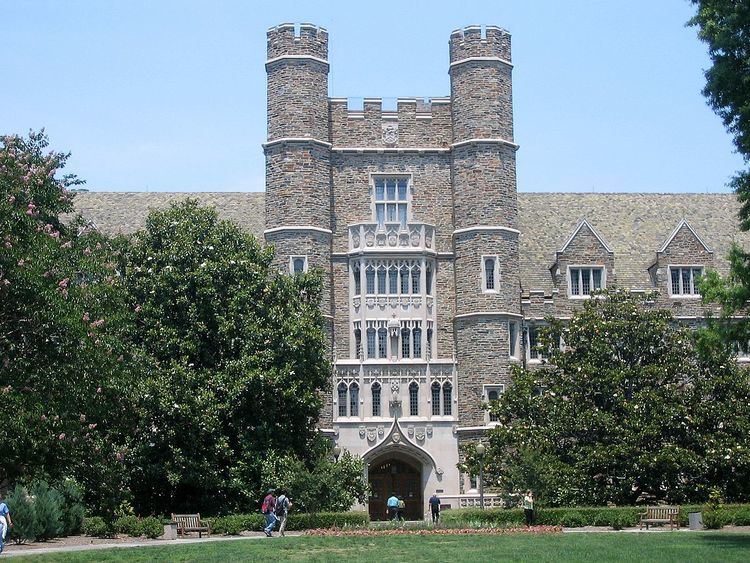Dean Nancy Andrews Phone +1 919-684-2985 Academic staff 2,000 | Established 1930 Students 450 Undergraduate tuition and fees 44,482 USD (2010) Total enrollment 422 (2010) Founded 1930 | |
 | ||
Address 8 Duke University Medical Center Greenspace, Durham, NC 27703, USA Notable alumni Similar Duke University, Duke University School of, Harvard Medical School, University of North Carolina, Vanderbilt University School of Profiles | ||
The Duke University School of Medicine (Duke Med) is Duke University's medical school operating under the auspices of the Duke University Medical Center. Established in 1925 by James B. Duke, Duke Med has earned its reputation as an integral part of one of the world's foremost patient care and biomedical research institutions.
Contents
- History
- Rankings and admissions
- Collaboration with the National University of Singapore
- Affiliated research institutions
- Notable faculty and alumni
- References
Clinical rotations by medical students and residents occur within the Duke University Health System, a fully integrated academic health care system encompassing a tertiary-care hospital and specialty clinics on the Medical Center campus, two community hospitals, home health and hospice services, a network of primary care physicians, and other affiliated partners across the SE United States. In particular, Duke University Medical Center is consistently ranked among the top 10 of some 5,700 American hospitals by US News and World Report, with 13 out of 16 specialties ranked among the nation's top 20 in 2007. Furthermore, the School of Medicine is especially noted for its groundbreaking biomedical research, bringing in $407 million in NIH-sponsored projects in 2006.
History
In 1925, James B. Duke made a bequest to establish the Duke School of Medicine, Duke School of Nursing, and Duke Hospital, with the goal of improving health care in the Carolinas and nationwide. 3,000 applicants applied to the new medical school in 1929 and 70 first- and third-year students were selected, including four women, for the School's inaugural class. In 1935, just five years after it opened, Duke was ranked among the top 25 percent of medical schools in the country by the AAMC.
In 1966, The Duke Medical Scientist Training Program (MSTP), a joint degree program leading to both the MD and the PhD degrees, was founded. The $94.5 million, 616-bed Duke Hospital opened in 1980, bringing the total number of patient beds to more than 1000. (Today the renovated original hospital serves as Duke Clinic, an outpatient facility that sees more than 1 million patients annually. Duke Hospital is currently licensed for 1,124 beds.) From then until 1994, the Medical Center embarked on the busiest period of new construction in decades, including the Levine Science Research Center, Medical Sciences Research Building, a complete renovation of Duke Clinic, additions to the Morris Building for cancer care and research, a new Children's Health Center, a new ambulatory care building, and new parking garages. Among its many breakthroughs and discoveries in medicine, the FDA approved lifesaving treatment for Pompe disease, a previously fatal genetic disorder, developed at Duke in 2006. That same year, Duke launched the university-wide Global Health Institute to promote education, research, and service in health care to underserved populations.
Rankings and admissions
According to US News and World Report, the Duke University School of Medicine consistently ranks in the top ten medical schools in the United States. Admission to Duke Med is highly competitive, with roughly 3.5% of applicants accepted for the 2015 starting class (7165 applied, 750 interviewed, 253 accepted, for a final class size of 115). The 2015 matriculants had an average GPA of 3.82 and average MCAT of 36. These students consisted of 60 men and 55 women representing 31 states and 51 undergraduate institutions.
Collaboration with the National University of Singapore
Duke opened a medical school collaboration with the National University of Singapore. The Duke-NUS Graduate Medical School graduated their first class in 2011. The curriculum is similar in structure though the Duke-NUS campus focuses heavily on their team-based learning method called TeamLEAD (Learn, Engage, Apply, Develop).
